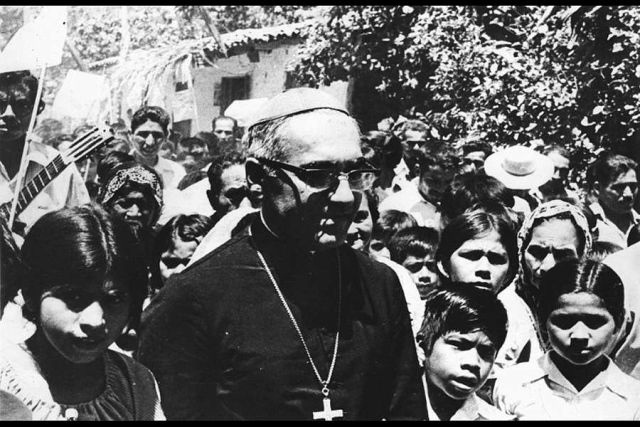
Assassination of a Saint: The Plot to Murder Oscar Romero & the Quest to Bring His Killers to Justice
Matt Eisenbrandt
University of California Press
256 pp., $49.99
There were innumerable horrors committed by El Salvador’s right-wing death-squad government during the civil war that raged from 1980 to 1992. Alongside the peasants and workers killed or disappeared and the nuns raped, were the priests who were executed. The most sensational execution of all was the murder of Archbishop of San Salvador Oscar Romero, gunned down while celebrating mass.
Romero, who had spoken out on behalf of the poor, was killed on March 24, 1980. This was the signal from the fascist right that they were preparing for total war against the people — with the active support of the US military and intelligence establishment.
Even Romero’s funeral was not respected. Hundreds of thousands of El Salvador’s poor who flocked to the cathedral were attacked by army snipers.
El Salvador was one of the poorest countries in the Western hemisphere, long dominated by a feudal oligarchy that exercised brutal violence to keep its power. A peasant revolt in 1932 was suppressed in one of the worst massacres of indigenous people in history.
From that revolt, the oligarchy took the lesson that any lessening of its viciousness would spell its doom. In this view, Catholic priests who began organising peasants, guided by left-wing Liberation Theology, were seen as an existential threat.
Romero was no radical when he became archbishop. But the murder of his friend, radical Jesuit priest Rutilio Grande, changed him fatefully. He began preaching against the government and demanding the US cease arming the Salvadoran military.
It was when he called on soldiers to stop following orders to kill the people that the decision was made to eliminate him.
Matt Eisenbrandt is a human rights lawyer who worked for the Center for Justice and Accountability (CJA). In 2004, the CJA used a US law, the Alien Torts Act, to successfully bring a civil case before a Californian court against one of the conspirators, former air force captain Alvaro Saravia.
There is clear evidence of “who gave the original order and who paid for the murder”, he says. “Any concerted investigation in El Salvador would absolutely be able to gather enough evidence to prosecute those involved.”
In his book, Eisenbrandt lays out the facts implicating the wealthy business owners, politicians and military death squad commanders in Romero’s murder. The trouble is that anyone following that trail of evidence in El Salvador is still subject to terror.
One of the book’s many compelling passages is an interview with an anonymous woman who infiltrated the death squad apparatus. She gathered intelligence for the left-wing Farabundo Marti National Liberation Front, which resisted the military dictatorship.
She discovered that Romero’s assassin was paid $200. “Life is still cheap in El Salvador,” Eisenbrandt says. Romero’s assassination is still a dangerous topic — hence the woman’s anonymity.
The court convicted Saravia, but he managed to skip the country, possibly with US intelligence connivance.
Eisenbrandt does not delve into the US operation supporting the Salvadoran death squads and the Nicaraguan Contras. This was run out of the US Embassy in Honduras, headed by then-ambassador John Negroponte.
Former US president George Bush appointed Negroponte as ambassador to Iraq in 2004, when US authorities lost control of the situation. Newspapers reported that the US intended to apply “the Salvador option”.
Suddenly death squads appeared — using the same brutal “calling card” methods as in El Salvador and Nicaragua during Negroponte’s time.
The need for justice for US-backed crimes in El Salvador is a global issue.
Like the article? Subscribe to Green Left now! You can also like us on Facebook and follow us on Twitter.